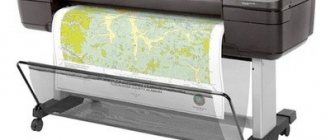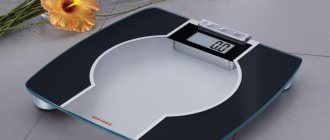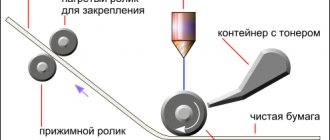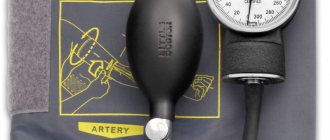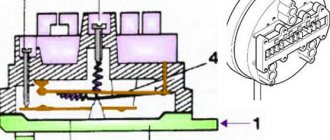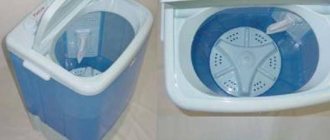Electronic scales are highly accurate. It is much higher than their mechanical predecessors. Models produced by manufacturers differ in price, shape, design and measurement methods.
Electronic scales weigh ingredients to the nearest gram. This allows cooks to follow all recipe bookmarks of dishes.
Small size and stylish design help the scale fit into any kitchen interior. The inexpensive cost of scales makes them accessible to people with different income levels who monitor their diet and carefully count calories when preparing food. It is necessary to make such calculations when monitoring weight and cholesterol.
Design and principle of operation
Electronic scales can be powered by an electrical network, a solar battery or a battery. Products produced by manufacturers for home use have two versions: floor-mounted and table-top. The first version of the scale is used for weighing large weights.
The main design elements of the scales are:
sensors;- indicators;
- keyboard.
Electronic products differ from mechanical scales by the presence of a digital screen. It displays weighing results with an accuracy of +0.1 g.
The principle of weighing simple electronic models is to measure vibrations of a measuring spring with sensors, which begins to deform under the pressure of raw materials placed in a bowl or on a platform.
More expensive models have a more complex weighing mechanism. The principle of their operation is based on measuring changes in the distance between the two disks with which the devices are equipped. When the item to be weighed is placed on one of them, it begins to fall, approaching the second. The change in the distance between the disks is recorded by an electronic sensor, which converts this indicator into a measure of weight and displays it on the screen.
Some models use voltage sensors. They stretch under the influence of weight. This causes a change in their resistance, which is recorded and converted into a measure of weight. All devices have additional functions.
The most popular functions:
- built-in timer for automatically turning off the scales;
- overload indicator;
- choice of weight measure (kilograms, grams, ounces);
- automatic memory.
Manufacturers equip expensive models with a “diet computer” function. It allows you to count calories in weighed foods.
Traditional materials and design features of electronic scales
In the production of household scales and the ease of their operation, the electronics industry makes most of its weighing devices in the form of flat horizontal platforms, at the base of which, as a rule, special digital measurement sensors are located in the corners.
Such design features of the scales allow:
- convenient to record and store weighing results,
- and also, quickly transmit them over various communication channels, synchronizing them with mobile devices via the Bluetooth wireless network.
In addition, there are modern electronic models of scales, the design of which uses both natural and artificial light sources using modern technologies based on solar panels. Traditional materials for the manufacture of household electronic scales are artificial materials such as plastic and glass, used in cheaper models, as well as natural materials such as metal, wood and stone, in more expensive models.
However, the choice of scale model and its appearance is determined by the capabilities and needs of the person himself, depending on a number of factors, such as:
- price value of scales,
- ease of device,
- strength and naturalness of the material used,
- life time,
- design style.
All these important factors can significantly influence your final choice: where to buy household electronic scales and in what price category.
| Akai floor scales, electronic, color: white, orange, up to 150 kg. 1351/O - buy in the online store at the best price. Bathroom scales with fast delivery from OZON.ru - Choose! |
Kinds
The main type of classification of kitchen electronic scales is their division into products:
- platform;
- with a bowl.
What scales do you use?
PlatformWith bowl
Weighing products on platform kitchen electronic scales is carried out together with the container in which they are located. This refers to the disadvantages of devices. To determine the net weight of products, you have to separately weigh the container and subtract its mass from the total result.
The advantage of the scales is the simplicity of the surface of the platform. It is much easier to weigh products, especially bulk products, on scales with a bowl. Glass, plastic, and stainless steel are used to make it.
Types of electronic scales
There are six types of electronic scales.
- Trading : allow you to immediately weigh a product and calculate its value based on price. Can work with external electronic devices.
- Packing : portion scales with a single function - weighing;
- Commodity : the same as trade, but for larger weights;
- Platform : large platform with strain gauge sensors;
- Pallet : for weighing pallets with cargo;
- Crane : electronic scales for cranes;
- Rokla : scales for loading trolley.
- Laboratory : electronic scales for small scales and precision weighing.
Electronic scales work almost the same way.
The best platform models for the kitchen
Beurer KS 48
Country of origin: Germany. The model is equipped with a platform with a glass surface. A designer drawing is applied to it. The device body is made of high-strength white plastic. The Beurer KS48 has a large touch display that can show the weight of products in grams and ounces.
The model has the “Tare Compensation” function, which ensures that when weighing, the total result of the tare mass is automatically subtracted. The results of weighing products on the platform can be stored in memory. The measurement error does not exceed 1 g.
Characteristics:
- maximum weighing limit – 5 kg;
- Dimensions – 180x170x240 mm.
The manufacturer's warranty period is 36 months.
Advantages:
- light weight;
- Beautiful design;
- high weighing accuracy;
- convenient touch settings.
Flaws:
- not detected.
Review:
Valentina F. The scales have very accurate weighing. The readings never change when re-measuring weight. Rubber feet prevent the platform from sliding on the table surface.
REDMOND RS-724-E
Russian brand, produced in China. The model is equipped with touch control with a tempered glass panel. Measurement accuracy up to 1 g. Measurements can be made in pounds and ounces.
There is an automatic shutdown function and an overload indicator. The body is made of durable plastic.
Characteristics:
- maximum weighing limit – 8 kg;
- Dimensions – 200x183x17 mm.
The manufacturer's warranty period is 24 months.
Advantages:
- presence of container function;
- immunity to blows;
- indexation of a stable position;
- light weight.
Main disadvantage:
- panel buttons sticking when touched with wet fingers.
Review:
Maria D. I like the model for its design. It has an intuitive menu and high measurement accuracy.
Caso L 15
Country of origin: China. The case of the model is made of stainless steel. Caso L 15 has a tare compensation function. The device is equipped with an overload indicator.
The display, located at an angle to the platform, shows the weighing results in bright, large numbers. The measurement results are saved in the device memory.
Characteristics:
- maximum weighing limit – 15 kg;
- Dimensions – 310x265x25 mm.
Manufacturer's warranty period – 24 months
Advantages:
- availability of a wide platform;
- compactness;
- high weighing accuracy.
Main disadvantage:
- Handprints are imprinted on the metal surface of the platform.
Review:
Olga I. I bought scales for my dacha. I like the stainless steel platform and convenient display. The numbers on it are clearly visible even in poor lighting.
Load cells: operating principle and application
The board is equipped with memory, which allows you to most accurately track the dynamics of weight changes. What to do if the scales are out of order Situations arise when an electronic device refuses to work.
After a while the display will show the word PASS. Modern models are equipped with the ability to store various indicators in memory for later comparison.
Today, high technology has reached a significant level.
The first category of devices has a price division of 2 grams; they are installed in places for the sale of light goods with high measurement accuracy. Now about the renovation.
Read more: Cable laying depth in the ground
Strain gauges for a wide range of applications are manufactured in the form of a spiral, closed, thin track of metal foil by chemical etching. The action depends on the degree of force exerted on the tight element. All models of commercial scales are equipped with a display, which is located either on the device body or on a remote stand.
Comfort in operation is combined with magnificent external design. They have become popular in wholesale warehouses and warehouses, as well as in production.
Connection diagrams for strain gauges
The consumer is presented with a large selection of weighing devices. These scales can also weigh items or a heavy bag, but they do not have a tare reset button.
The repair has been completed. The AT89C51 processor is programmed with firmware version 8. The presence of deformation can be determined by level or by taking measurements with a caliper. For tabletop scales, manufacturers prefer plastic or glass, and for industrial floor scales, they prefer a stronger and more durable material that can withstand heavy loads, metal. Double repair of Scarlett SC-218 and Marta MT-1686 scales
The best options with a bowl
Bugatti UMA 56
Country of origin: China. The model has a very stylish look. The device's memory functionality allows you to weigh products one by one without removing them from the bowl. The memory system stores the results of each individual weighing.
The display is equipped with backlight. You can determine the weight of products not only in grams, but also in pounds. While cooking, the Bugatti UMA 56 can be used as a timer. Weighing accuracy up to 1 g.
Characteristics:
- maximum weighing limit – 3 kg;
- Dimensions – 240x220x220 mm.
Manufacturer's warranty period – 12 months
Advantages:
- stylish design;
- convenient backlit display;
- low cost.
Main disadvantage:
- the need to frequently change AA batteries.
Review:
Natalya Zh. I bought the scales because of the design. I use them to weigh grains. Very comfortably.
Gemlux GL-KS5SB
Russian brand, produced in China. The model has a stylish modern design. Weight measurement accuracy up to 1 g. Material: stainless steel. The bowl is removable and can be easily washed in the dishwasher.
The display has a pleasant blue backlight. There is a battery charging indicator. The weight of products can be measured in grams, pounds, ounces. Measurement of the volume of liquids in milliliters is available.
Characteristics:
- maximum weighing limit – 3 kg;
- Dimensions – 178x195x120 mm.
The manufacturer's warranty period is 12 months.
Advantages:
- automatic shutdown;
- the presence of rubberized feet that prevent the device from sliding on the table surface;
- light weight;
- low cost.
Flaws:
- weak batteries;
- Automatic shutdown cannot be reset to a different waiting period.
Review:
Maxim L. Not bad scales. Sometimes I use the bowl for fruit. The model has a nice design. There are all the necessary options.
ProfiCook PC-KW 1040
Country of origin: China. The model can measure not only weight, but also the volume of liquids. It has convenient button controls. The metal body is painted in a pleasant silver color. Weighing accuracy up to 1 g. The bowl is removable.
When idle, Profi Cook PC-KW 1040 automatically switches off. The LCD display has a bright backlight. There are overload and battery charging indicators. Weighing can be done in grams and ounces.
Characteristics:
- maximum weighing limit – 5 kg;
- Dimensions – 205x210x130 mm.
The manufacturer's warranty period is 24 months.
Advantages:
- durable metal construction;
- presence of display backlight;
- automatic shutdown;
- strong design;
- light weight and compactness.
Flaws:
- very narrow battery compartment;
- low battery charge.
Review:
Evgeny V. The model has a stylish design, but weak batteries. Enough for only 19-20 weighings.
Portable electronic scales up to 500 g: detailed review and testing
Small electronic scales with a maximum weighing weight of up to 500 grams. The device is equipped with a monochrome LCD display, as well as a strain gauge with high accuracy of weight measurement (0.01 g). In this review, we'll look at the scale's packaging, check the build quality, and also conduct tests on the stated measurement accuracy.
You can buy such electronic scales on Aliexpress Here or Here
Price at the time of publication: $8.65
You will find more interesting products from Aliexpress in my telegram channel
Content
- Specifications
- Package
- Appearance
- Functionality
- Testing
- conclusions
Specifications
| Weighing range | 0.01-500 grams |
| Measurement accuracy | 0.01 grams |
| Weight unit | Gram, ounce, troy ounce, pennyweight, pound, grain, carat |
| Housing material | Plastic |
| Case size | 125*105*20 mm |
| Nutrition | 2 X AAA |
Package
Electronic scales are supplied in a small blue cardboard box, on which an image of the scale is printed, weight units are indicated, and there is also brief technical information.
On the side of the box the maximum weighing limit is 500 g with an accuracy of 0.01 g.
Appearance
Inside the box there are scales in a plastic container. There is a small recess at the bottom of the container, with which you can easily reach the scales.
The set of scales was extremely minimal: electronic scales, two containers of different capacities and instructions. There were no batteries or other power sources included.
The two weighing containers have different capacities and, accordingly, sizes. The dimensions of the large container are 130*110*20 mm, the small container has a square shape, with overall dimensions of 105*105*8 mm. Both bowls are made of ordinary, transparent plastic.
The instructions are offered in two languages: Chinese and English. The instructions contain descriptions of the various modes of operation of the device, as well as tips for proper operation of the scales.
The working surface of the scales was wrapped in shipping film. For ease of operation and accuracy of measured readings, the film was carefully removed.
After removing the film, you can become more familiar with the appearance and interface of the scales.
On the front panel there is a square work surface made of thin sheet metal connected to a load cell. At the bottom there are four function buttons, as well as a small LCD display.
Functional buttons are designed to control the scales, specifically:
- Power button (turns on and off electronic scales);
- Button “M” (Mode, switches units of measurement, and is also used for some other actions);
- “PCS” button (calculation of the number of pieces, with this option, the scales can be used as a counter);
- Button “T” (tare function, resets the mass of an object on the scales).
On the back of the scale there is a compartment for two AAA batteries, as well as a small sticker with the weighing range and battery type.
Functionality
After turning on the scale, the display showed the current weight of 0.00, as well as the default unit of measurement “g” grams.
Container function
Putting a small container on the scales, I got a weight of 24.74 g. Using the tare function (T button), I reset the weight to zero. If the container is removed from the scales, we will see a negative weight of -24.74 g. In order to return the scale readings to normal (remove the minus value), you must press the “T” button again and the current weight will become 0.00 g.
Units
If you need to weigh something not in the metric system of units (SI), but in another (American or British apothecary system of weights), then the “Mode” function will help you with this. By pressing the “M” button successively, you can see the weight of the object in various units of measurement:
- g (grams)
- gn (grain)
- dwt (pennyweight)
- oz (ounce)
- ozt (troy ounce)
- t (to be honest, I still haven’t figured out what unit of measurement this is)
- c (carat)
Mass calculator and counting function
With this function it is possible to use scales to count the number of various small parts. This option works as follows:
1) Turn on the scales and weigh the required number of items. Then hold down the “PCS” button for three seconds, after which you need to press the “M” button to set the number of pieces of objects to be measured (25, 50, 75, 100). After you have selected the required number of items (in my case, these are 25 screws), you need to press the “PCS” button again.
2) We remove one screw from the scales and see that the number on the display has changed from 25 to 24. Thus, you can easily count a small number of items (up to 100).
You can exit the mass calculator mode by pressing the “M” (Mode) button.
Auto calibration function
The scales have an automatic calibration function. To do this, you need to have an accurate, reference weight (weight) equal to the maximum weighing weight (in our case, 500 grams). I did not calibrate the scales, since I do not have such a weight. The calibration procedure goes like this:
- With the scales turned off, simultaneously press the power button and the “M” (Mode) button;
- The scales turn on with the value 500.00 flashing;
- Place the reference weight on the scale (preferably in the center);
- The display shows the word “PASS”;
- Remove the weight and turn off the scale;
- The calibration process is completed.
Testing
To test the scales, I had a calibration kit, which included 5 weights: 20 g, 10 g, 5 g, 2 g, 1 gram.
First, two weights with a mass of 20 g and 10 g were weighed alternately. The discrepancy between the measured mass and the reference mass of two weights was 0.02 grams in both cases.
Then the remaining weights with masses of 5 g, 2 g and 1 gram were weighed. In this case, a slight difference was detected with a weight of 2 grams; the difference between the measured weight and the reference weight was 0.01 grams.
Next, I installed all the weights on the scales and weighed them. The measured weight was 38.06 grams.
At the end of the tests, I tried to measure a mass that was greater than the maximum weighing limit (“pancake” from a collapsible dumbbell of 800 grams). When weighing such a mass, the scales display a “0-LD” error, indicating that the upper measurement limit has been exceeded.
conclusions
During operation, the electronic scales showed themselves to be quite good. Of course, it is immediately worth noting the fact that the results of weighing the standard weights still leave questions. The measured error of a weight with a mass equal to or greater than 10 grams is 0.02 grams. On the other hand, it is also impossible to completely trust the “reference” weight of weights, since there is no way to check their mass with scales that have been verified by the metrological service. Finally, you can take a 500 gram weight and calibrate the scale (if you are confident in the accuracy of the weight).
For most people, such high accuracy of weight measurement is clearly not required: for example, it is possible to weigh the required amount of seasoning for a dish with an error of 0.02 grams. It's also worth considering the $8.65 price the scale sells for. I was pleased with the purchase; for the price, these are quite good scales.
Pros:
- Light weight and compact size
- Powered by commonly used AAA batteries
- Wide range of units of measurement
- Good weighing accuracy (quite good for household needs, even taking into account small discrepancies during tests)
- Mass calculator function
- Auto calibration function
- Two convenient weighing containers included in delivery
Minuses:
- Weighing accuracy has a discrepancy of 0.02 grams, on the reference weight 10 grams and 20 grams
- Lack of instructions in Russian
- “Poisonous” blue display backlight
Multifunctional devices
The most expensive models are equipped with a calorie counter. Such household devices are in high demand among people who carefully monitor their diet. Manufacturers produce many models of this type, differing in measurement limit, control method and other characteristics.
In addition to counting calories of weighed products, they can total and display bread units. This calculation is important for people suffering from diabetes. The scale's memory contains information about the calorie content of several hundred foods. Almost all models have a tare subtraction function.
What to look for when purchasing
The main indicators that you should pay attention to when purchasing devices are: maximum and minimum weighing limits, reading error. The normal error rate for household models is 5 g. The standard maximum weighing limit for kitchen scales is 3-5 kg.
The more options a product has, the more expensive it is. You should not buy multifunctional scales if a significant part of their options will not be in demand. You can get by with a simple and inexpensive model. When purchasing products, it is important to pay attention to the manufacturer’s warranty period and user reviews.

